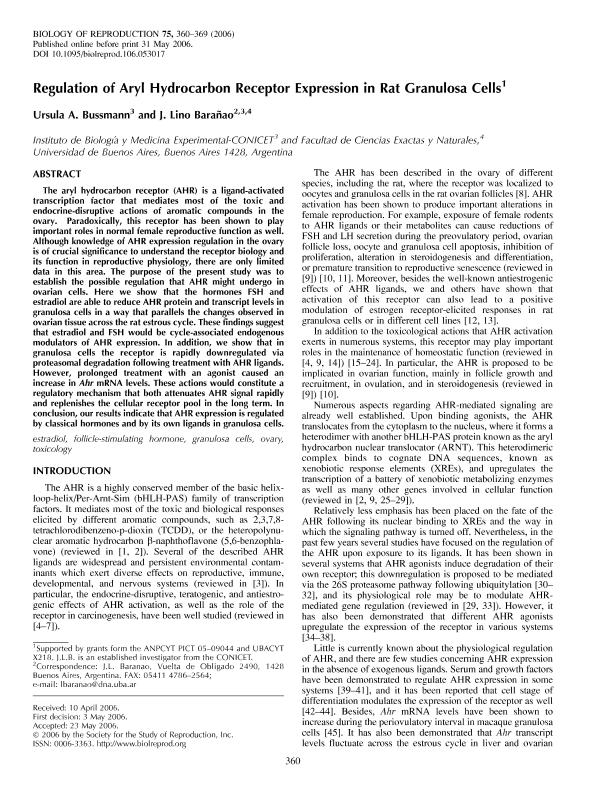Artículo
Regulation of aryl hydrocarbon receptor expression in rat granulosa cells
Fecha de publicación:
31/05/2006
Editorial:
Society For The Study Of Reproduction
Revista:
Biology Of Reproduction
ISSN:
0006-3363
e-ISSN:
1529-7268
Idioma:
Inglés
Tipo de recurso:
Artículo publicado
Clasificación temática:
Resumen
The aryl hydrocarbon receptor (AHR) is a ligand-activated transcription factor that mediates most of the toxic and endocrine-disruptive actions of aromatic compounds in theovary. Paradoxically, this receptor has been shown to play important roles in normal female reproductive function as well. Although knowledge of AHR expression regulation in the ovary<br />is of crucial significance to understand the receptor biology and its function in reproductive physiology, there are only limited data in this area. The purpose of the present study was to<br />establish the possible regulation that AHR might undergo in ovarian cells. Here we show that the hormones FSH and estradiol are able to reduce AHR protein and transcript levels in granulosa cells in a way that parallels the changes observed in ovarian tissue across the rat estrous cycle. These findings suggest that estradiol and FSH would be cycle-associated endogenous modulators of AHR expression. In addition, we show that in granulosa cells the receptor is rapidly downregulated via proteasomal degradation following treatment with AHR ligands. However, prolonged treatment with an agonist caused an increase in Ahr mRNA levels. These actions would constitute a regulatory mechanism that both attenuates AHR signal rapidly and replenishes the cellular receptor pool in the long term. In conclusion, our results indicate that AHR expression is regulated by classical hormones and by its own ligands in granulosa cells.
Archivos asociados
Licencia
Identificadores
Colecciones
Articulos(IBYME)
Articulos de INST.DE BIOLOGIA Y MEDICINA EXPERIMENTAL (I)
Articulos de INST.DE BIOLOGIA Y MEDICINA EXPERIMENTAL (I)
Citación
Bussmann, Ursula Agnes; Barañao, Jose Lino Salvador; Regulation of aryl hydrocarbon receptor expression in rat granulosa cells; Society For The Study Of Reproduction; Biology Of Reproduction; 75; 3; 31-5-2006; 360-369
Compartir
Altmétricas




